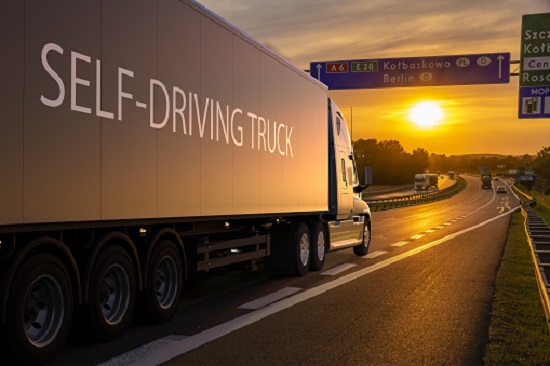Raquel Urtasun’s Waabi Autonomous Vehicle Software Company is Launched
By John P. Desmond, AI Trends Editor Raquel Urtasun hit the ground running as an entrepreneur on June 8, with the announcement of her autonomous driving software company Waabi, complete with $83.5 million in backing. Urtasun has a long track record as a computer scientist, especially working to apply AI to self-driving car software. Uber hired […]


By John P. Desmond, AI Trends Editor
Raquel Urtasun hit the ground running as an entrepreneur on June 8, with the announcement of her autonomous driving software company Waabi, complete with $83.5 million in backing.

Urtasun has a long track record as a computer scientist, especially working to apply AI to self-driving car software. Uber hired her in May 2017 to lead a research team based in Toronto for the company’s self-driving car program. (See AI Trends, June 29, 2018)
“Self-driving is one of the most exciting and important technologies of our generation. Once solved at scale, it will change the world as we know it,” stated Urtasun in the Waabi launch press release. “Waabi is the culmination of my life’s work to bring commercially viable self-driving technology to society and I’m honoured to be joined by a team of extraordinary scientists, engineers and technologists who are equally committed to executing on this bold vision.”
The Waabi launch was greeted with some skepticism, given the state of the self-driving car industry working to get off the ground. But Urtasan knows what she’s doing.
The latest financing round was led by Khosla Ventures, with additional participation from Urtasun’s former employer, Uber, and Aurora, the AV startup that ended up acquiring Uber ATG in a deal last year, according to an account in The Verge. Money was also raised from 8VC, Radical Ventures, Omers Ventures, BDC, AI luminaries Geoffrey Hinton, Fei-Fei Li, Pieter Abbeel, Sanja Fidler, and others, the report said.
Waabi will initially focus on the trucking industry, offering its software to automate driving on commercial delivery routes. One reason is, the industry has a shortage of truck drivers. Second, the highways are simpler than city streets for autonomous vehicles to navigate.
Wasabi’s technical approach will lean heavily on simulation, using techniques Urtasan has developed in her research. The company’s simulation approach will reduce the need for the miles of testing on real roads and highways that autonomous driving competitors have logged
“For us in simulation, we can test the entire system,” Urtasun stated to The Verge. “We can train an entire system to learn in simulation, and we can produce the simulations with an incredible level of fidelity, such that we can really correlate what happens in simulation with what is happening in the real world.”
To have an autonomous vehicle startup founded by a woman who developed the technology and is the CEO is unusual; Urtasan hopes to inspire other women to join the industry. “This is a field that is very dominated by white dudes,” she said. “The way to build integrating knowledge is to build technology with diverse perspectives, because by challenging each other, we build better things.”
Earlier Career at Uber, Toyota
Urtasun started at Uber in May 2017, to pursue her work on machine perception for self-driving cars. The work entails machine learning, computer vision, robotics, and remote sensing. Before coming to the university, Urtasun worked at the Toyota Technological Institute at Chicago. Uber committed to hiring dozens of researchers and made a multi-year, multi-million dollar commitment to Toronto’s Vector Institute, which Urtasun co-founded.
Urtasan has argued that self-driving vehicles need to wean themselves off Lidar (Light Detection and Ranging), a remote sensing method that uses a pulsed laser to measure variable distances. Her research has shown in some cases that vehicles can obtain similar 3D data about the world from ordinary cameras, which are much less expensive than Lidar units, which cost thousands of dollars.
“If you want to build a reliable self-driving car right now, we should be using all possible sensors,” Urtasun told Wired in an interview published in November 2017. “Longer term, the question is how can we build a fleet of self-driving cars that are not expensive.”

The company’s technical “AI-first approach” implies that they will put more emphasis on better machine learning models and less on complementary technologies including Lidar, radar, and mapping data, according to an account in TechTalks. “The benefit of having a software-heavy stack is the very low costs of updating the technology. And there will be a lot of updating in the coming years,” stated Ben Dickson, author of the report and founder of TechTalks.
Urtasun described the AI system the company uses as a “family of algorithms,” in an account of the launch in TechCrunch. Its closed-loop simulation environment is a replacement for sending real cars on real roads.
“I’m a bit on the fence on the simulation component,” Dickson stated “Most self-driving car companies are using simulations as part of the training regime of their deep learning models. But creating simulation environments that are exact replications of the real world is virtually impossible, which is why self-driving car companies continue to use heavy road testing.”
Waymo Leads in Simulated and Real Testing Miles
Waymo has at least 20 billion miles of simulated driving to go with its 20 million miles of real-road testing, a record in the industry, according to Dickson. To gain more insight into Waabi’s technology, he looked at some of Urtasun’s recent academic work at the University of Toronto. Her name appears on many papers about autonomous driving; one, uploaded on the arXiv preprint server in January, caught Dickson’s attention.
Titled “MP3: A Unified Model to Map, Perceive, Predict and Plan,” the paper discusses an approach to self-driving close to the description in Waabi’s launch press release.
The researchers describe MP3 as “an end-to-end approach to mapless driving that is interpretable, does not incur any information loss, and reasons about uncertainty in the intermediate representations.” In the paper, researchers also discuss the use of “probabilistic spatial layers to model the static and dynamic parts of the environment.”
MP3 is end-to-end trainable. It uses Lidar input to create scene representations, predict future states and plan trajectories. “The machine learning model obviates the need for finely detailed mapping data that companies like Waymo use in their self-driving vehicles,” Dickson stated.
Urtasun posted a video, A Future with Self-Driving Vehicles, on her YouTube channel that provides a brief explanation of how MP3 works. Some researchers commented that it is a clever combination of existing techniques. “There’s also a sizable gap between academic AI research and applied AI,” Dickson stated. How the Waabi model performs in practical settings will be interesting to watch.
Read the source articles and information in AI Trends, the Waabi launch press release, in The Verge, in TechTalks, in TechCrunch and in a YouTube video, A Future with Self-Driving Vehicles.





































